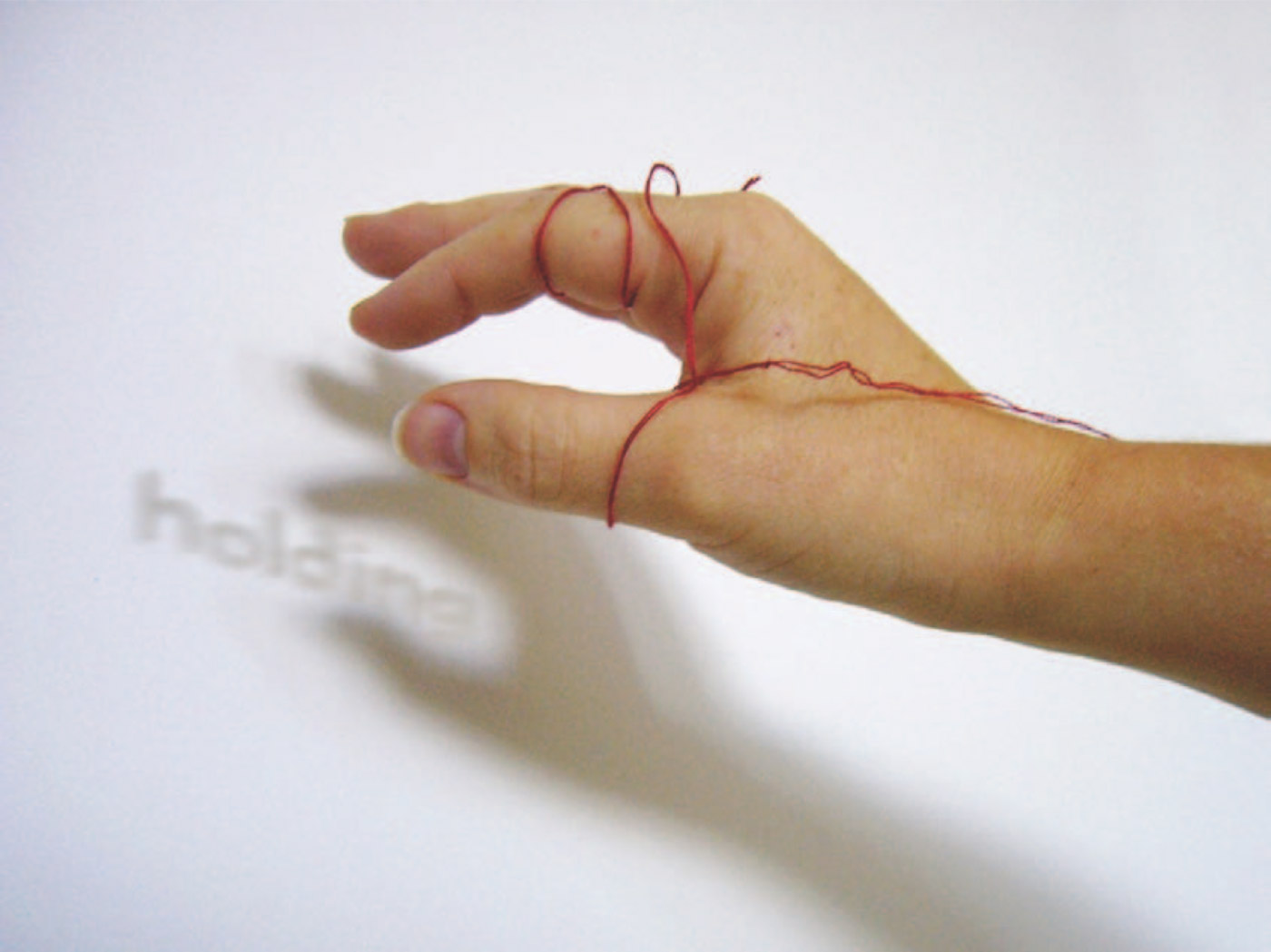
Helen White
Holding
In Helen White’s poem “Holding” (81), a woman’s hand laced with thread is held up to a wall with pointer finger and thumb slightly apart, revealing the word “holding” in shadow on the wall. The shadow seems to correspond to the emptiness between the fingers, but there is nothing in that space to cast a shadow. The red thread would seem to hold or attach the thing that casts the shadow, but the hand, too, seems empty, the thread too loose on the hand to hold the shadow-caster.
Helen White (81, 197) transforms texts in an entirely different way, by leaving them comprehensible but moving them into new contexts, often human contexts. Her obsession is of the text as human object. Her pieces often include human bodies and interactions with texts, some evidence of the physical human presence. She understands the power of text as a human creation but also how the text is so completely human that it takes on human characteristics, that it has significance only in human contexts. (Huth 330)
It’s the human context that befuddles our access to White’s poem and gives it interesting complexity. In “Holding,” in contrast to most of the poems in The Last Vispo Anthology, the text is legible (it says “holding”) but the process or method of creation is illegible. Where so many of the poems in the anthology contain text that has been electronically manipulated to be illegible, seeming to celebrate Adobe Photoshop’s layering and erasure tools, White’s poem seems to have been manipulated to be legible while erasing the trace of manipulation. After all, nothing present in the photo can cast the shadow word “holding.” Only our human context allows us access to this history of the photo: we know, from childhood shadow puppets and our memories of shadows, that the photo does not present a truthful image.
“Holding” (81) is the shadow, the poem, a hand sort of holding the title word, or the shadow is a face with the mouth screaming the word. The hand has a red thread around it that does not show in the shadow. Is the red thread trying to hold back the hand from telling what? This work is by Helen White. She often uses the red thread in her works, not only here. Hers is also “invisible ink,” and the figure is ghostlike rather than a shadow. (Rosenberg 326)
The red thread through White’s poems acts as a lead or reminder, like a ribbon tied around one’s finger as a promise to/of the future. But the future is tricky: like Hansel and Gretel’s bread crumbs in the snow, its lead cannot be trusted. Unlike Ariadne’s, White’s red thread leads nowhere; the emptiness that seems to contain meaning points to the history of the image, which is where the meaning (“holding,” as of a place) resides.